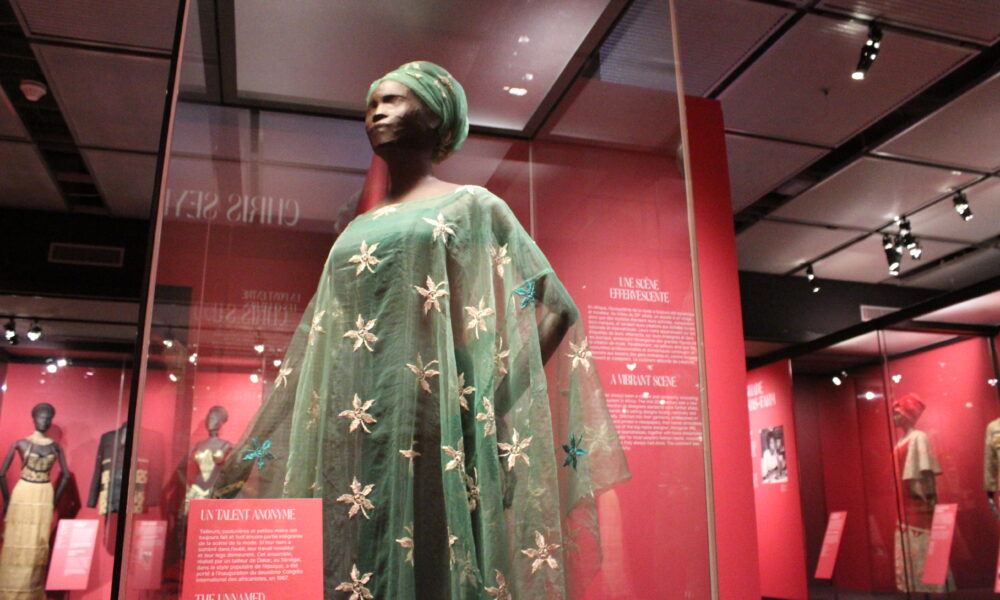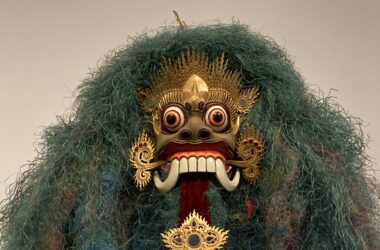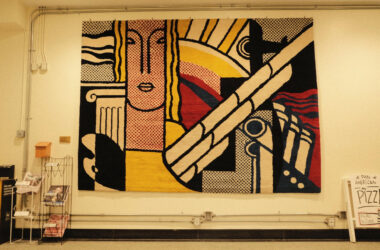The Africa Fashion exhibition at the McCord Stewart Museum tells a story that spans six decades, 20 countries, and boundless artistry. On display from Sept. 25 to Feb. 1, 2026, the show marks the only Canadian stop on an international tour organized by London’s Victoria and Albert Museum. It presents 100 garments and accessories, as well as textiles, photographs, and videos from 45 designers that foreground individual perspectives on the vitality of African fashion. Rather than attempting to showcase every textile tradition across the continent, Africa Fashion spotlights selected designers whose work captures the eclectic nature of the continent’s fashion as a self-defining art form.
At its core, the exhibition explores the concept of agency—the ability of African designers and wearers to define themselves in their own terms. The narrative begins in 1960, when 17 African nations gained independence, turning fashion into a language of liberation. It became a strategic political act as nations asserted their cultural identities, using art as a powerful force of post-colonial self-expression and global innovation.
This generation of pioneers bridged tradition and modernity with ingenuity. Nigerian designer Shade Thomas-Fahm revolutionized everyday wear for the modern woman by opening Maison Shade in 1960, the year of Nigeria’s independence. She added zippers to traditionally wrapped ìró skirts and created pre-tied gèlè headwraps that allowed busy, cosmopolitan women to embrace Nigerian fabrics without sacrificing convenience. Malian designer Chris Seydou reimagined traditional textiles through a contemporary lens, while Ghanaian artist Kofi Ansah combined indigo-dyed Adire cloth with Japanese denim jacquard fabric. Their work embodied how fashion became a tool for decolonizing minds—expressing freedom through reimagined tradition.
Authentic representation and celebration of African beauty is woven into every element of Africa Fashion, embodied even by the mannequins themselves. Rejecting the Eurocentric figures that dominate the fashion industry, the Victoria and Albert Museum collaborated with South Sudanese model Adhel Bol to create mannequins that emulated the beauty of African models, spanning four different skin tones and three hairstyles, including Irun Didi braids and Bantu knots. The result is an exhibition where the presentation method serves as an extension of the curatorial narrative, centring African beauty and the visual culture of its fashion creatives.
The Politics and Poetics of Cloth section examines how textiles themselves became strategic political declarations during independence movements. Indigenous clothes that had been devalued under colonialism were reclaimed as symbols of pride and resistance. The exhibition features commemorative cloth made in the early 1990s celebrating Nelson Mandela’s release from prison, traditional kente fabric from Ghana, Nigerian àdìrẹ, and Malian bògòlanfini—pieces that gesture toward the continent’s thousands of textile techniques and traditions.
The contemporary section of the exhibition demonstrates how today’s generation of designers continue to push boundaries while honouring heritage. South African designer Thebe Magugu’s Alchemy collection, created in collaboration with traditional healer Noentla Khumalo, centres on African spirituality and ancestral relationships. Kenyan brand IAMISIGO, founded by Bubu Ogisi, references ancient West African masquerade costumes and performance art traditions. Rwandan fashion house Moshions reimagines traditional Rwandan forms and cultural motifs into contemporary pieces that reference ceremonial attire historically worn by royalty. Djiboutian costume designer and photographer Gouled Ahmed creates self portraits that combine textured garments with contemporary materials to represent multifaceted identities. Nigerian company DAKALA CLOTH by NKWO explores ways of using waste denim to create new textiles while preserving traditional craft skills, exemplifying how innovation can honour ancestral techniques.
Africa Fashion ultimately demonstrates that fashion is never just about clothing; it is storytelling, cultural preservation, and resistance encoded in fabric and form. What visitors witness is not the emergence of African fashion onto the global stage, but rather a long-overdue reframing of who gets to tell these stories. As the exhibition affirms, African designers have been charting their own course for decades: Revolutionizing adornment into an assertion of identity, a reclamation of heritage, and an uncompromising vision of the future.







